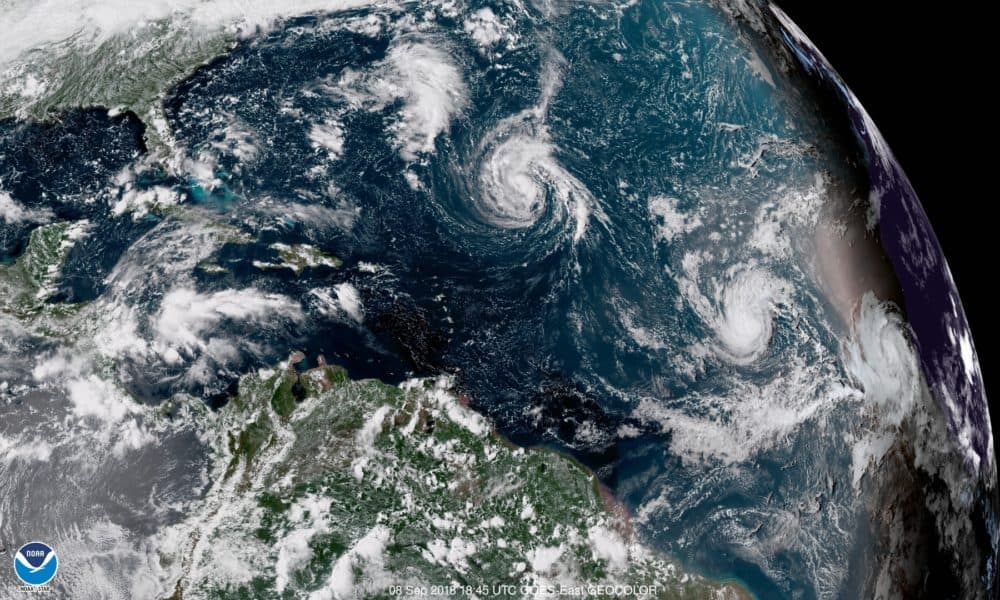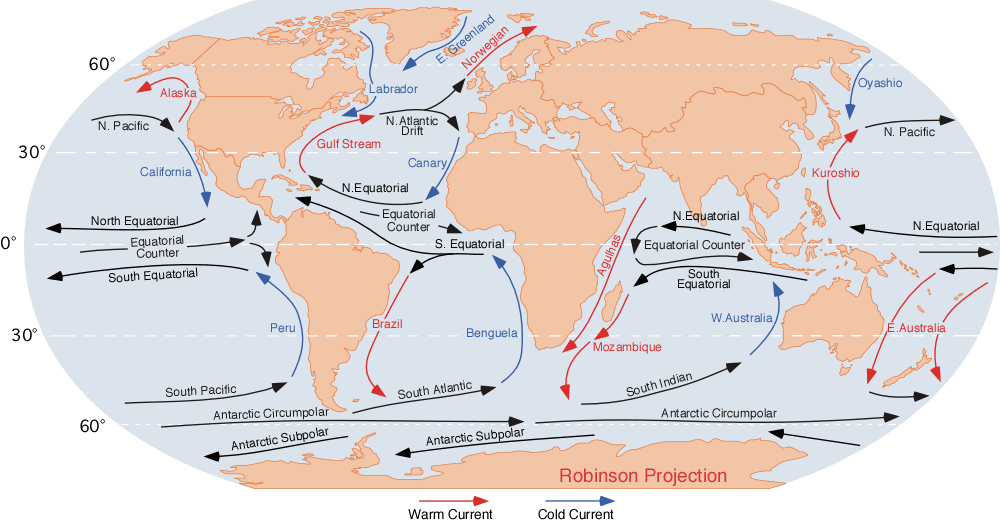Advertisement
How Ocean Currents Influence Global Climate And Weather
Resume
The National Oceanic and Atmospheric Administration's 2018 Arctic Report Card, released this week, warns that a warming Arctic is causing widespread environmental changes. These changes are due in part to the ways the Arctic affects ocean currents around the world.
Here & Now's Jeremy Hobson talks with Greg Johnson, an oceanographer at the National Oceanic and Atmospheric Administration, about how ocean currents move and how they influence the Earth's climate and weather.
Interview Highlights
On how water moves around the world
"Ocean currents are actually primarily driven by the winds. There are basically three ingredients: There's the winds, and you have the trade winds at lower latitudes, which blow from east to west, and then at higher latitudes, say the latitude of Seattle, you have the westerlies, which blow from west to east. So that's the first ingredient.
"The second ingredient is the fact that the world is rotating. So there's a force that sets up called the Coriolis force that adds rotation to the ocean currents … And the third ingredient is other continents. If they weren't there you'd have currents that went all the way around the world. But they are there. And so you have these gyres that set up that look like huge whirlpools in the ocean. And the fact that the rotation and the continents combine means that actually what happens is the gyres are intensified to the west. So you have these boundary currents that are called western boundary currents that are very strong. A very familiar one is the Gulf Stream in the North Atlantic. But there are others in all the other ocean basins."

On how much our weather and climate are based on ocean currents
"Ocean currents are important for moderating the climate. They bring heat from the equator to the poles. That is an enormous amount of heat. It's actually as much as two petawatts. A petawatt is a watt with 15 zeros after it. It's about 100 times the rate of mankind's energy consumption. So it's a huge amount of heat. That warmth crosses the Atlantic and the North Atlantic current and moves up towards Europe where it gives off heat to the atmosphere that warms the coast of Europe."
On why currents are not circular
"That is because of the continents. So the western boundary currents, the Gulf Stream, that is forced by winds all the way across the Atlantic from New England all the way over to Europe, and it's the cumulative effect of those winds that that sets the strength of the Gulf Stream. So as those winds vary, the strength of the Gulf Stream varies, but it very slowly and really with a lag. [It] may take a couple of years for that wind energy to make its way over to the western boundary in the ocean and show up as a change in the Gulf Stream strength."
On how long it takes ocean currents to change
"It depends on where you are. The Gulf Stream, it takes a few years to change. … But currents in the tropical Pacific and along the coasts, where planetary waves, which are not exactly like surface waves, but they're much larger scale, can convey energy quickly. Those take on the order of weeks to months to change. So El Niño, another worldwide weather phenomenon, happens when the trade winds relax in the western Pacific and there's warm water that's been piled up by those trade winds in the western Pacific. But that water rushes eastward in a matter of months and helps to warm up the eastern Pacific and change weather patterns around the world."
On how currents cause garbage buildups in the ocean
"The great garbage patch in the north Pacific is a direct consequence of ocean currents. You have trade winds at low latitudes that are blowing from east to west and then again at high latitudes you have the westerlies, and so you have water flowing north from near the equator and then also water flowing south from the higher latitudes, and they carry with them plastic and garbage. Those currents actually concentrate the garbage in garbage patch in the middle of the Pacific. There's a similar one in all the oceans."
On how scientists track ocean currents
"There's a whole division in NOAA, the Office of Response and Restoration, that actually uses computer models of the ocean that are driven by the winds to try to help track oil spills. And in fact do search and rescue when people are lost at sea, and a big part of that is predicting the ocean currents and we're pretty good at doing that in real time in the surface. There are still very mysterious things about the ocean currents that we don't understand, however. I'm part of a program called Argo which is a program that is seeding the ocean with 4,000 robotic floats and they drift down at about six-tenths of a mile deep for 10-day periods, and we can get a good sense of what the ocean currents look like down there. And there are these fantastic things that pop out that we had no idea were there."
Julia Corcoran produced and edited this interview for broadcast. Francesca Paris adapted it for the web.
This segment aired on December 13, 2018.
